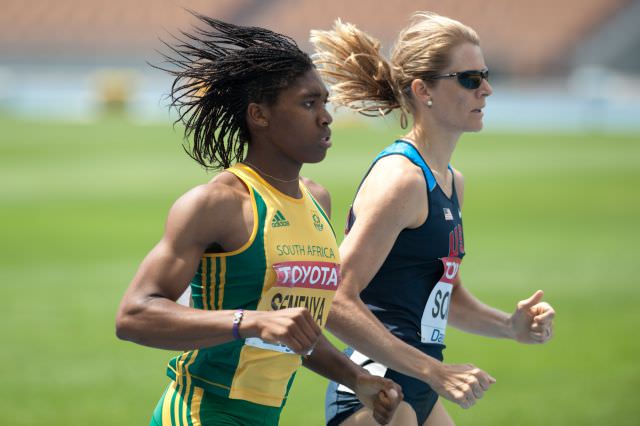World
European Court Nixes Testosterone Regs for Intersex Athletes
By Mara Lafontaine · July 13, 2023

South African middle-distance runner, Caster Semenya, has won a significant legal victory against discriminatory sports rules that required her to medically reduce her natural hormone levels to compete in major competitions. The European Court of Human Rights (ECHR) ruled on Tuesday that Semenya had been discriminated against due to her intersex condition, known as differences in sexual development (DSD), which results in higher testosterone levels than most women.
Semenya, a three-time world champion and double Olympic champion over 800m, has always identified as female and refused to take medication to lower her testosterone levels since the International World Athletics Federation introduced the requirement in 2018. This ruling, however, does not automatically allow her to return to competition. She may still miss the 2024 Olympic Games.
In an interview with Deutsche Welle, Katrina Karkazis, a cultural anthropologist at Amherst College in Massachusetts, hailed the decision as a significant step forward for human rights in sports. She said, “I think it’s a tremendous decision…It sends a resounding message right now that the lens through which we’ve talked about and debated these policies, which has primarily been a scientific one, has been to the disadvantage of considering human rights violations.”
The World Athletics Federation, however, maintains that their regulations are justifiable and balanced measures to safeguard equitable competition in the women’s division, vowing to appeal the verdict. Karkazis believes the Federation is sadly lagging other sports governing bodies, stating, “I would argue that World Athletics is not at the forefront, but is actually falling far behind these kinds of considerations…The IOC very recently redid their regulations and did them exclusively through a human rights framework. FIFA is also going through a similar process…World Athletics at this point actually looks out of step for repeatedly not considering or even acknowledging human rights violations with their regulations.”
The controversy surrounding Semenya’s case centers on the relationship between testosterone levels and athletic performance. While The World Athletics Federation argues that elevated testosterone levels provide an unfair advantage, Karkazis points out that the evidence is mixed, noting, “Sometimes there’s a positive relationship between testosterone level and athletic performance. Sometimes it’s neutral, and sometimes it’s negative, which means that actually the higher the testosterone, the worse you do.”
The landmark ruling is a significant shift in the conversation around sex and gender complexity in sports, placing human rights considerations at the forefront.
Light Wave commentary
The European Court of Human Rights’ ruling on the testosterone regulations for intersex athletes, as demonstrated by Caster Semenya’s case, has sparked a complex debate. While it is a significant victory for human rights in sports, the decision does not guarantee Semenya’s immediate return to competition. The World Athletics Federation’s intention to appeal highlights the ongoing disagreements and challenges surrounding fair competition. The controversy revolves around the relationship between testosterone levels and athletic performance, with conflicting evidence. The Semenya ruling underscores the importance of considering human rights while addressing the complexities of sex and gender in sports.